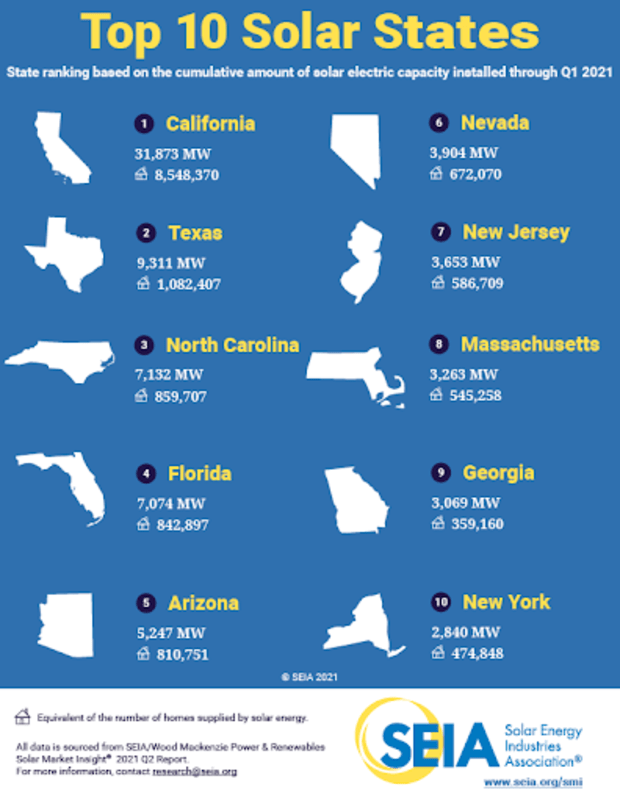As Bitcoin transforms the incentives around energy use, will solar power become the future of mining?
There are two energy revolutions currently underway that complement one another: the revolution in human energy use, as greener or more sustainable options become a priority in the light of climate change, and the Bitcoin revolution that is driving a whole new frontier in how energy is used to create value.
Solar power in particular seems like the cutting edge for renewable Bitcoin mining. Bitcoin industry stalwarts Blockstream and Square are constructing a multi-million-dollar solar-powered mining facility, for instance.
But it’s hard to know what percentage of the Bitcoin network’s overall hash rate is generated by solar power, though anecdotal evidence from solar developer Blake King of RES Holdings indicates that there are new solar projects “everywhere” in the U.S.
In a recent Compass Mining podcast, King noted that there really isn’t data available to determine exactly how much solar energy is available, but he’s hearing that power grid generation queues are full of new solar companies trying to get in.
“It’s huge,” he said. “There’s gigawatts of solar coming in everywhere.”
The latest Cambridge Centre For Alternative Finance energy data indicates that “a growing share of total electricity consumption originates from renewable energy sources such as hydro, solar, or wind power,” though, the center notes, that “the exact energy mix of the Bitcoin mining industry remains unknown… estimates diverge considerably, ranging from approximately 20% to 30% of the total energy mix to more than 70%”
The Potential For Solar-Powered Bitcoin Mining
As the share of solar-powered hash rate seems likely to grow, many see the potential for renewable energy use in Bitcoin mining as a virtuous cycle — one in which the unique incentives in Bitcoin mining, which propel operations to leverage the cheapest power possible, will encourage more operations worldwide to convert to renewable energy sources, like solar.
And as governments agree to reduce levels of carbon emissions and introduce additional incentives like investment tax credits, it’s possible that the share of mining operations using solar power will increase even more.
As Dan Frumkin, head of research and content for Braiins and Slush Pool, wrote recently, there’s the “the possibility for bitcoin to [incentivize] renewable energy development around the world by providing a means to monetize surplus energy which would otherwise be wasted.”
Where Is Solar-Powered Bitcoin Mining Happening?
In an interview with Bitcoin Magazine, Frumkin said that there is no reliable data on where solar farms are located, but there are some likely homes.
“I think the whole Southwest is optimal for solar,” he said. “My home state of New Mexico gets about 300 days of sunshine per year and has plenty of barren desert landscapes. It also has lots of oil and gas production, so I think it would be a great place to try a solar and waste-gas hybrid operations to ensure uptime even when the sun isn’t shining.”
Blockstream and Square’s forthcoming joint venture will be located in the state of Georgia.
Meanwhile, the Solar Energies Industry Association has listed the top ten states for solar power based on the cumulative amount of solar capacity installed in Q1 2021.
Anecdotally, we also know that West Texas is a solar and wind powerhouse and a new favorite mecca for companies hoping to mine bitcoin.
The Downsides Of Solar-Powered Mining
In his written analysis, Frumkin noted that solar power may be considered green and renewable, but also that there are significant problems with solar, including the limits of sunlight hours. The below chart demonstrates the availability of solar compared to other energy sources:
In the recent Compass Mining podcast, Frumkin and Blake explained that there are a number of ways to fill in the hours without sunlight (also, those when it’s cloudy or there are dust storms) to make solar power use economical.
Some companies use a natural gas generator to fill in those gaps, leveraging an energy source that is relatively inexpensive but not renewable. Other miners have contracts or “power purchase agreements” (PPAs) with their local energy grids to purchase off-peak, inexpensive power through the night, often for as low as two cents per kilowatt hour. This may be power that would otherwise go unused.
The below chart shows the estimated relative price of different energy sources, per the International Renewable Energy Agency:
Most solar power companies use batteries to capture and store excess solar rays, and that works especially well for small operations. But it is not a solution for larger operations.
“A solar panel and battery system on somebody’s roof will work well to power a few miners with full uptime,” Frumkin told Bitcoin Magazine. “If the solar farm is much larger and meant to be supplying energy to the grid, then there is another source of demand for the power in those batteries and then it becomes complicated. This is the case that I analyzed here, where the battery power was reserved for the grid and the only power that could be used for mining was the surplus produced after meeting grid demand and filling the batteries. In that case, I don’t believe the risk/reward on mining is attractive.”
Is Solar Power Even Truly Green?
Although solar energy itself is considered “green” or renewable, the process of manufacturing solar panels often uses coal and produces toxic waste as a byproduct.
Most solar panels are manufactured in China in the Xinjiang region (which, until recently, was also a bitcoin mining epicenter) where there is abundant available coal energy.
“In my opinion it is legit criticism,” Frumkin said of the environmental drawbacks of solar panel manufacturing. “So much of the world’s solar panel production takes place in Xinjiang and is quite likely involving slave labor of the Uyghur ethnic minority people there, as well as the use of lots of coal power and toxic chemicals in the manufacturing process.”
As a result, the idea that solar power would actually be a “green” alternative for bitcoin mining might be a misconception.
“It’s still not accurate to portray solar as 100% clean either from an environmental or ethical standpoint,” Frumkin said. “Maybe the tradeoffs are worth it with all factors considered, but it’s rare to even see the negative factors mentioned in mainstream media.”





